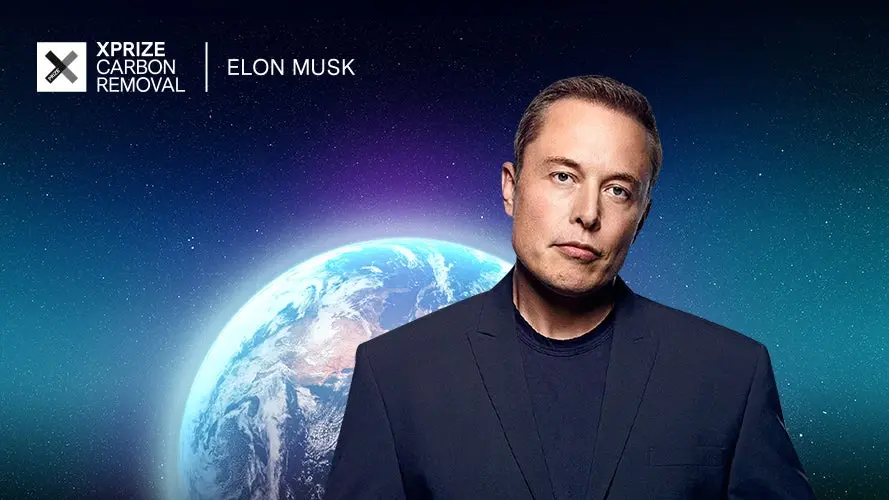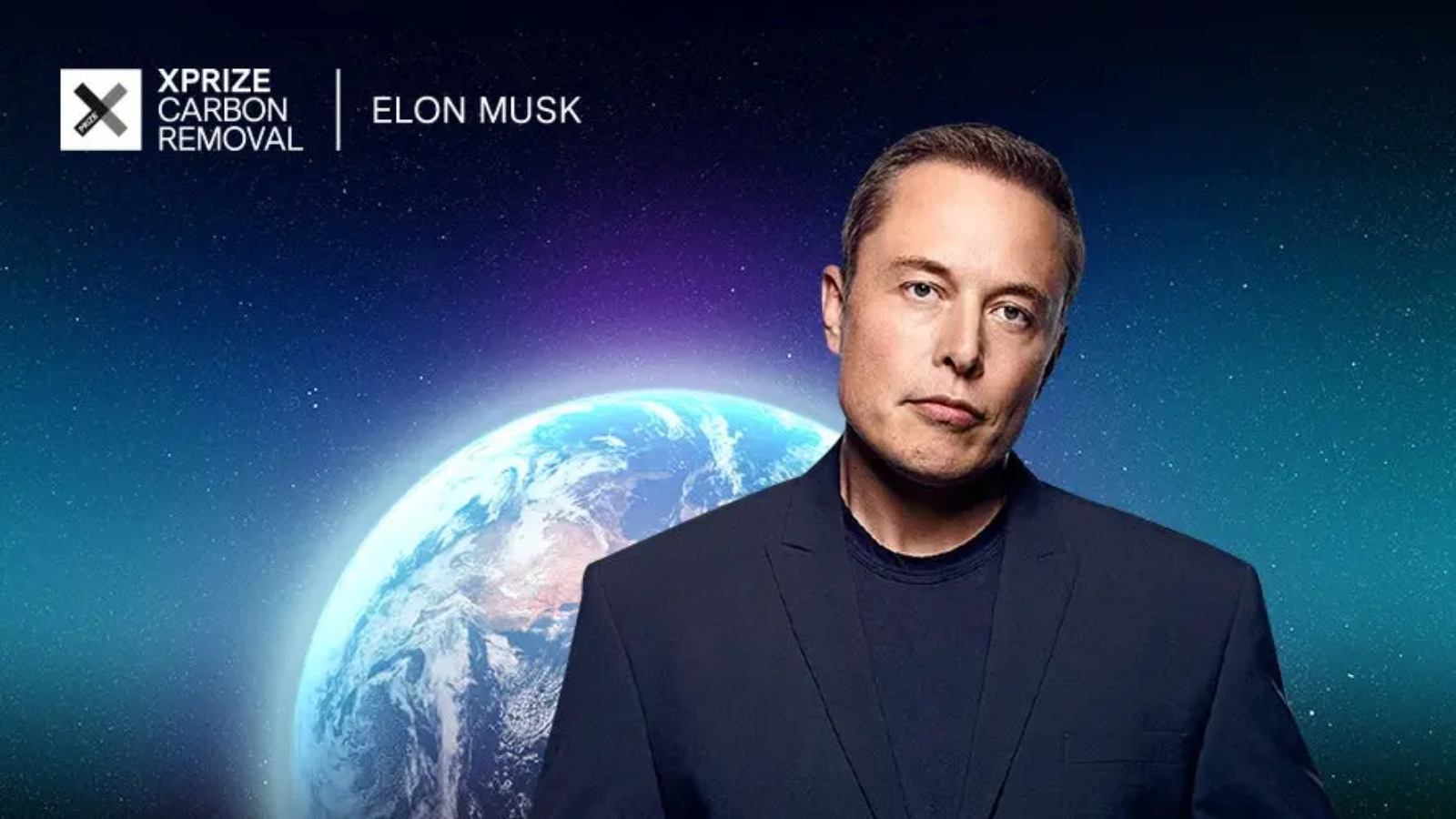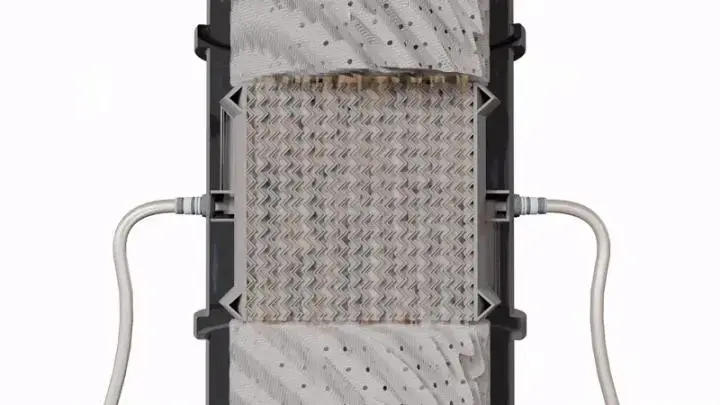XPRIZE launched the $100M XPRIZE Carbon Removal sponsored by Elon Musk and the Musk Foundation and there is little doubt that 3D printing will accelerate and enable reaching this objective. This four-year global competition invites innovators and teams from anywhere on the planet to create and demonstrate a solution that can pull carbon dioxide directly from the atmosphere or oceans and lock it away permanently in an environmentally benign way.
To win the competition, teams must demonstrate a rigorous, validated scale model of their solution at a level of carbon removal of 1 ton of CO2 per day, and further must demonstrate to a team of judges the ability of their solution to economically scale to gigaton levels. The objective of this XPRIZE is to inspire and help scale efficient solutions to collectively achieve the 10 gigaton per year carbon removal target by 2050, to help fight climate change and restore the Earth’s carbon balance.
“We want to make a truly meaningful impact. Carbon negativity, not neutrality. The ultimate goal is scalable carbon extraction that is measured based on the ‘fully considered cost per ton’ which includes the environmental impact. This is not a theoretical competition; we want teams that will build real systems that can make a measurable impact and scale to a gigaton level. Whatever it takes. Time is of the essence,” said Elon Musk, founder and CEO of Tesla and SpaceX.

Additive manufacturing will inevitably play a major role in the development and possibly even in the production of new systems for efficient CO2 removal. Just a few months ago, a team from the Oak Ridge National Laboratory invented a 3D printed absorption device made from aluminum that is capable of capturing carbon dioxide emissions from fossil fuel plants. The innovative device, which can also be used in other industrial processes, could help to curb global emissions of greenhouse gases like CO2 which trap heat in the atmosphere and contribute to global warming.
The 3D printed device consists of a heat exchanger with a mass-exchanging contactor and integrates internal coolant channels to improve heat exchange. A final prototype of the device measures 20.3 centimeters in diameter and 14.6 centimeters in height and has a total fluid volume capacity of 0.6 liters. The piece was printed from aluminum because of the material’s high thermal conductivity, structural strength and printability, though other materials could also be used.
The CO2 trapping device was tested inside of an absorption column measuring one meter in height and eight inches in width. The 3D printed intensified part was placed in the top half of the column between some of the structure’s seven packing elements. 3D printing was crucial in creating a part that could fit inside the column, conforming to the geometries of the packing elements and optimizing the contact surface area between the gas and liquid streams.
“We are challenging engineers, scientists and entrepreneurs to build and demonstrate carbon removal systems that work,” said Peter H. Diamandis, Founder and Executive Chairman of XPRIZE. “Systems that in sub-scale can demonstrate real, viable carbon removal at 1 ton per day, and then show us how those systems can scale (cost effectively) to scale massively to gigaton scale. The goal of this competition is to inspire entrepreneurs and engineers to build the carbon dioxide removal solutions, many of which have only been discussed and debated. We want to see them built, tested, and validated. We hope this XPRIZE will activate the public and private sectors to get involved in the same way that the $10M Ansari XPRIZE brought about the commercial spaceflight industry.”
For humanity to reach the Paris Agreements goal of limiting the Earth’s temperature rise to no more than 1.5˚(C) of pre-industrial levels, or even 2˚(C), we need bold, radical tech innovation and scale up that goes beyond limiting CO2 emissions, but actually removes CO2 already in the air and oceans. If humanity continues on a business-as-usual path, the global average temperature could increase 6˚(C) by the year 2100.
The full competition guidelines will be announced on April 22nd, 2021, which is also Earth Day. On that same day team registration will begin. The competition will last for 4 years through Earth Day 2025.
The $100M in prize purses will be distributed in the following manner:
Manufacturing on Demand
After 18 months, at the discretion of the competition judges, the 15 top teams selected will receive $1 million each. Milestone Awards will kickstart team fundraising for their operating budgets to achieve the full-scale demonstrations required to win the prize.
In the same timeframe, a total of twenty-five $200,000 student scholarships will be distributed to student teams competing.
The remaining $80M in Purses will be distributed as follows:
1) Grand prize Winner (1st Place): $50M
2) 2nd Place: $20M
3) 3rd Place: $10M
Teams can submit entries across natural, engineer and hybrid solutions. Judges in the competition will evaluate the teams based upon four basic criteria:
1) A working carbon removal prototype that can be rigorously validated capable of removing at least 1 ton per day.
2) The team’s ability to demonstrate to the judges that their solution can economically scale to the gigaton level.
3) The main metric for this competition is fully considered cost per ton, inclusive of whatever considerations are necessary for environmental benefit, permanence, any value-added products; and
4) The final criteria is the length of time that the removed carbon is locked up for. A minimum goal of 100 years is desired.
“Our Earth’s changing climate is a fundamental threat to humanity. But it’s not too late if we take action NOW! Human imagination and creativity can shape a brighter and more sustainable future on this planet we call home,” said Anousheh Ansari, CEO of XPRIZE. “By partnering with Elon and the Musk Foundation, we will crowdsource cost-effective solutions that can scale massively in the real world. Through XPRIZE Carbon Removal competition, the teams are invited to make history and become our climate heroes by reshaping our future.”
“We are expecting a huge array and diversity of teams from around the world to register and compete. What’s beautiful about an XPRIZE competition is the diversity of approaches taken by the teams. This is a great fit for carbon removal because there are so many ways to pull CO2 out of the air and our oceans. We expect to see approaches like engineered direct air capture, mineralization and enhanced weathering, natural solutions based on plants, trees, or ocean-focused solutions. We want as many viable scalable demonstrations now so we can all help the best solutions get to deployment as soon as possible.”
* This article is reprinted from 3D Printing Media Network. If you are involved in infringement, please contact us to delete it.
Author: Davide Sher



Good day. I developed a method to get rid of Co2 gasses 5 years back already, but since then I’ve been struggling to get ahold of Elon Musk in order to demonstrate my idea to him. I would like to enter the competition to decrease the Co2 gas in earths atmosphere.